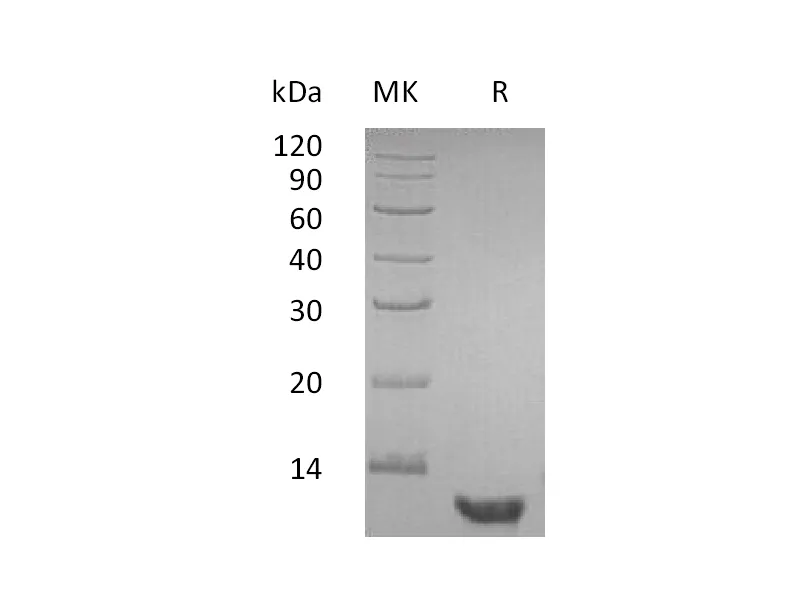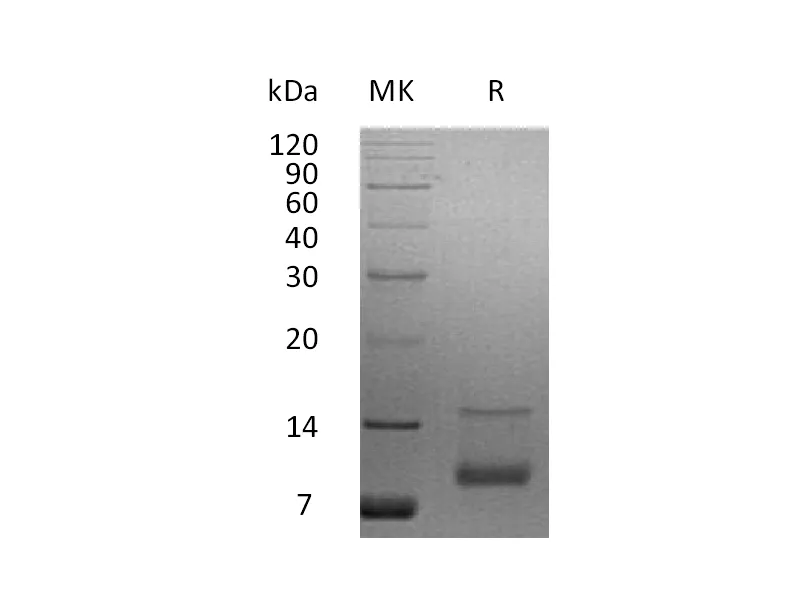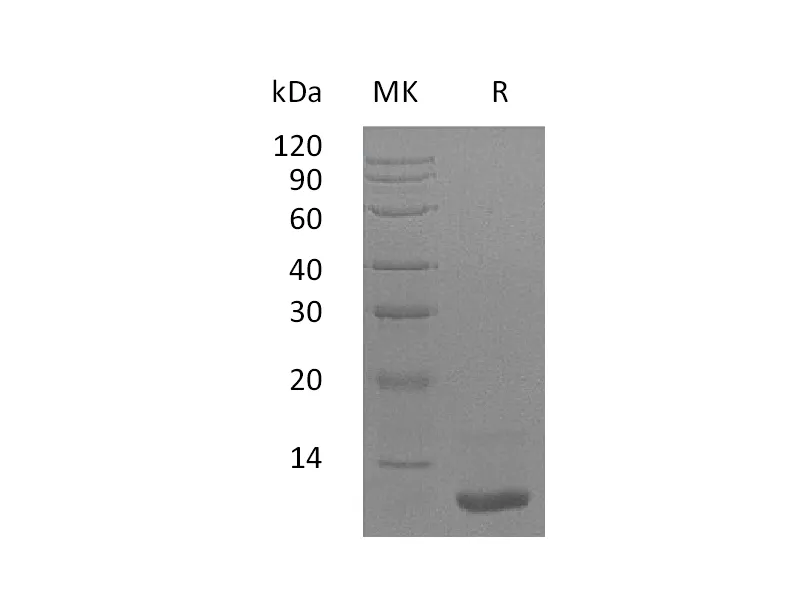| 产品名称 |
Recombinant Human CXCL2 |
| 英文名称 |
CXCL2/GRO beta/MIP2-alpha/C-X-C Motif Chemokine 2 |
| 纯度 |
Greater than 95% as determined by reducing SDS-PAGE |
| 内毒素 |
<1 EU/µg as determined by LAL test. |
| 蛋白构建 |
Recombinant Human C-X-C Motif Chemokine 2 is produced by our E.coli expression system and the target gene encoding Thr39-Asn107 is expressed. |
| Accession |
P19875 |
| 表达宿主 |
E.coli |
| 种属 |
Human |
| 预测分子量 |
7.67 KDa |
| 制剂 |
Lyophilized from a 0.2 μm filtered solution of 20mM Tris-HCl, 150mM NaCl, pH 8.0. |
| 运输方式 |
The product is shipped at ambient temperature.Upon receipt, store it immediately at the temperature listed below. |
| 稳定性&储存 |
Lyophilized protein should be stored at ≤ -20°C, stable for one year after receipt.Reconstituted protein solution can be stored at 2-8°C for 2-7 days.Aliquots of reconstituted samples are stable at ≤ -20°C for 3 months. |
| 复溶 |
Always centrifuge tubes before opening.Do not mix by vortex or pipetting.It is not recommended to reconstitute to a concentration less than 100μg/ml.Dissolve the lyophilized protein in distilled water.Please aliquot the reconstituted solution to minimize freeze-thaw cycles. |
| 分子别名 |
| C-X-C Motif Chemokine 2; Growth-Regulated Protein Beta; Gro-Beta; Macrophage Inflammatory Protein 2-Alpha; MIP2-Alpha; CXCL2; GRO2; GROB; MIP2A; SCYB2 |
| 背景介绍 |
| Chemokine Ligand 2 (CXCL2) is a small secreted cytokine which belongs to the CXC chemokine family. It is secreted by monocytes and macrophages and chemotactic for polymorphonuclear leukocytes and hematopoietic stem cells. CXCL2 mobilizes cells by interacting with a cell surface chemokine receptor called CXCR2. It has been known to regulate immune functions mainly by chemo-attracting neutrophils. It is produced by activated monocytes and neutrophils and expressed at sites of inflammation. It is a hematoregulatory chemokine, which suppresses hematopoietic progenitor cell proliferation. It can be induced by receptor activator of NF-kappaB ligand, the osteoclast (OC) differentiation factor, through JNK and NF-kappaB signaling pathways in OC precursor cells. CXCL2 in turn enhanced the proliferation of OC precursor cells of bone marrow-derived macrophages (BMMs) through the activation of ERK. Knockdown of CXCL2 inhibited both the proliferation of and the ERK activation in BMMs. During osteoclastogenesis CXCL2 stimulated the adhesion and the migration of BMMs. CXCL2 is a novel therapeutic target for inflammatory bone destructive diseases. |
注意事项
本司产品仅用于科研,不用于临床诊断和治疗




